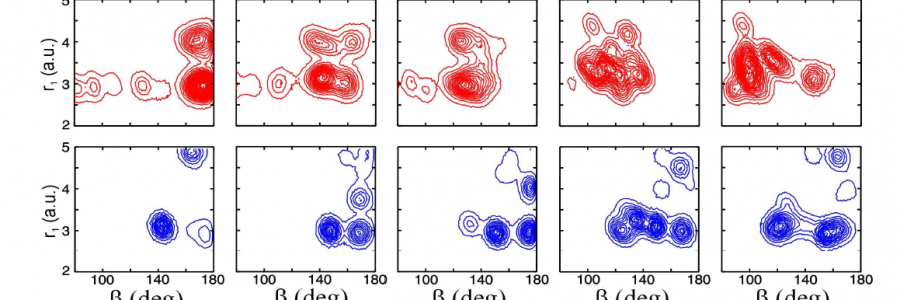Feb. 2017 – New article in Chemical Physics Letters:
Kwanghsi Wang(a) , Vincent McKoy(a), Paul Hockett(b), Albert Stolow(b, c, d),Michael S. Schuurman(b, d),
a A. A. Noyes Laboratory of Chemical Physics, California Institute of Technology, Pasadena, California 91125, USA
b National Research Council Canada, 100 Sussex Drive, Ottawa, Ontario K1A 0R6, Canada
c Department of Physics, University of Ottawa, ON K1N 6N5 Canada
d Department of Chemistry and Biomolecular Sciences, University of Ottawa, Ottawa, ON, K1N 6N5, Canada
Highlights
- • Time-resolved photoelectron angular distributions around conical intersections are studied.
- • Ab initio multiple spawning method is applied to obtain wavepacket densities.
- • Geometry and energy dependent photoelectron matrix elements are employed.
- • Molecular and laboratory photoelectron angular distributions are used to illustrate the non-adiabatic dynamics.
- • Photoelectron spectra are compared with measured values.
Abstract
We report results from a novel fully ab initio method for simulating the time-resolved photoelectron angular distributions around conical intersections in CS2. The technique employs wavepacket densities obtained with the multiple spawning method in conjunction with geometry- and energy-dependent photoionization matrix elements. The robust agreement of the calculated molecular-frame photoelectron angular distributions with measured values for CS2 demonstrates that this approach can successfully illuminate, and disentangle, the underlying coupled nuclear and electronic dynamics around conical intersections in polyatomic molecules.
DOI: 10.1016/j.cplett.2017.02.014






